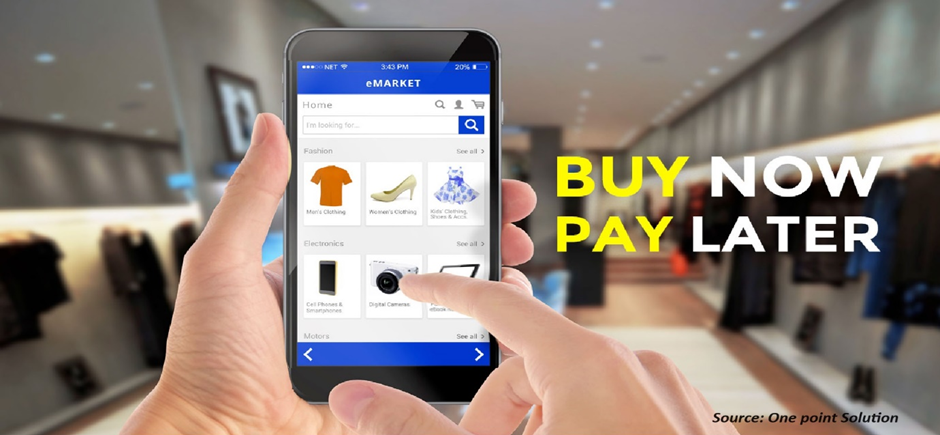
Russia Mobile Payment Market by Age (Generation Z, Millennials, Generation X, and Baby Boomers), by Payment Type (Proximity and Remote), and by Application (Money Transfers, Merchandise Purchases, Bill Payments, Airtime Top-ups, Ticketing, and Others) – Opportunity Analysis and Industry Forecast, 2024–2030
Industry: ICT & Media | Publish Date: 01-Sep-2024 | No of Pages: 111 | No. of Tables: 79 | No. of Figures: 44 | Format: PDF | Report Code : IC2487
Russia Mobile Payment Market Overview
The Russia Mobile Payment Market size was valued at USD 2.50 billion in 2023, and is predicted to reach USD 4.50 billion by 2030, with a CAGR of 7.6% from 2024 to 2030. The mobile payment system, also known as money transfer, mobile money, m-payments, electronic payments, and digital payments, enables financial transactions through mobile devices such as smartphones, tablets, and wearables.
These transactions occur through mobile apps or various methods such as proximity and remote transactions. Mobile payment systems include various types such as mobile wallets, mobile banking apps, and online payment services such as PayPal, Venmo, and Google Pay.
Utilizing technologies such as SMS, near-field communication (NFC), quick response (QR) codes, and others, these systems ensure smooth transactions while employing robust security measures including encryption and biometric authentication to protect personal and financial data.
Praised for their convenience, speed, security, and integration with other financial tools, mobile payment systems experience widespread adoption. Moreover, users can configure payment apps to automatically settle bills, such as utility or credit card bills, ensuring efficient financial management and preventing late payments.
Shift Towards Cashless Societies Propels the Russia Mobile Payment Market
The shift towards cashless societies serves as a significant driver of market growth in the mobile payment industry in the country. As societies worldwide increasingly adopt digitalization and prioritize convenience, cashless payments have become the preferred method for transactions. Mobile payment solutions provide consumers and businesses with a seamless and efficient alternative to cash, enabling secure and contactless transactions using smartphones or other mobile devices. The convenience, speed, and hygiene benefits of cashless payments have been particularly emphasized, especially during global events such as the COVID-19 pandemic, driving further adoption.
Additionally, governments and regulatory bodies actively promote cashless economies to address issues such as tax evasion, money laundering, and the underground economy. Consequently, the growing acceptance and adoption of cashless payment methods propel market growth for mobile payment solutions, offering opportunities for innovation, expansion, and financial inclusion.
High Adoption of Smartphones Drives the Russia Mobile Payment Market
The widespread adoption of smartphones and the rising penetration of the internet serve as pivotal drivers accelerating the Russia mobile payment market growth. As smartphones become increasingly prevalent and internet connectivity expands globally, a vast majority of consumers now have access to the essential tools required for mobile payments. Smartphones act as convenient and portable payment terminals, empowering users to conduct transactions at their convenience, regardless of location.
Simultaneously, the increasing availability of internet access ensures seamless connectivity, facilitating secure and real-time payment processing. With more consumers embracing smartphones and gaining access to reliable internet services, the potential user base for mobile payments experiences exponential growth.
This trend not only enhances convenience and accessibility for consumers but also encourages merchants to adopt mobile payment solutions to meet evolving consumer preferences, thereby driving the overall expansion of the Russia mobile payment market.
Resistance from Traditional Financial Institutions Restrains the Market Growth
The resistance from traditional financial institutions poses a significant barrier to the Russia mobile payment market demand. Established banks and financial entities may view mobile payment solutions as disruptive to their existing business models, leading to reluctance in supporting or promoting these innovative technologies.
This resistance stems from concerns about potential revenue cannibalization, regulatory complexities, and the perceived threat of losing control over payment infrastructures. Consequently, traditional financial institutions may hesitate to invest in mobile payment initiatives or collaborate with fintech startups and mobile payment providers, hindering the development and adoption of innovative payment solutions. Overcoming this resistance requires collaboration, regulatory alignment, and education to demonstrate the benefits of mobile payments for both financial institutions and consumers, thereby unlocking the full potential of the mobile payment market.
The Emergence of Real-Time Payment Creates Opportunities in the Russia Mobile Payment Market
The emergence of real-time payments presents a remarkable opportunity for the mobile payment market, offering unparalleled speed and efficiency in fund transfers in the country. Real-time payment systems enable instant transactions between parties, empowering mobile payment providers to deliver seamless experiences to consumers and businesses. With real-time payments, transactions can be settled instantly, whether it's splitting bills with friends, making retail purchases, or transferring funds between accounts.
Furthermore, the integration of real-time payment capabilities into various industries, including e-commerce, peer-to-peer lending, and on-demand services, IoT drives innovation and expands the mobile payment ecosystem. In essence, the rise of real-time payments revolutionizes payment processing and creates abundant opportunities for growth and innovation in the mobile payment market.
Competitive Landscape
Various market players operating in the Russia mobile payment industry include Alphabet, Inc. (Google), Alibaba Group Holdings Limited, Amazon.com, Inc., Apple, Inc., PayPal Holdings, Inc., Visa, Inc., Tencent Holdings Limited (WeChat), MasterCard International, Inc., Samsung Electronics Co. Ltd., Block, Inc., and others. These key players have adopted various strategies to strengthen their market share.
Russia Mobile Payment Market Key Segments
By Age
-
Generation Z
-
Millennials
-
Generation X
-
Baby Boomers
By Payment Type
-
Proximity
-
Near-Field Communication (NFC)
-
Quick Response (QR) Code Payments
-
-
Remote
-
Internet Payments
-
SMS/Direct Carrier Billing
-
By Application
-
Money Transfers
-
Merchandise Purchases
-
Bill Payments
-
Airtime Top-ups
-
Ticketing
-
Others
REPORT SCOPE AND SEGMENTATION:
|
Parameters |
Details |
|
Market Size in 2023 |
USD 2.50 Billion |
|
Revenue Forecast in 2030 |
USD 4.50 Billion |
|
Growth Rate |
CAGR of 7.6% from 2024 to 2030 |
|
Analysis Period |
2023–2030 |
|
Base Year Considered |
2023 |
|
Forecast Period |
2024–2030 |
|
Market Size Estimation |
Billion (USD) |
|
Growth Factors |
|
|
Companies Profiled |
10 |
|
Market Share |
Available for 10 companies |
|
Customization Scope |
Free customization (equivalent up to 80 working hours of analysts) after purchase. Addition or alteration to country, regional, and segment scope. |
|
Pricing and Purchase Options |
Avail customized purchase options to meet your exact research needs. |
KEY PLAYERS
-
Alphabet, Inc. (Google)
-
Alibaba Group Holdings Limited
-
Amazon.com, Inc.
-
Apple, Inc.
-
PayPal Holdings, Inc.
-
Visa, Inc.
-
Tencent Holdings Limited (WeChat)
-
MasterCard International, Inc.
-
Samsung Electronics Co. Ltd.
-
Block, Inc.




 Speak to Our Analyst
Speak to Our Analyst

































